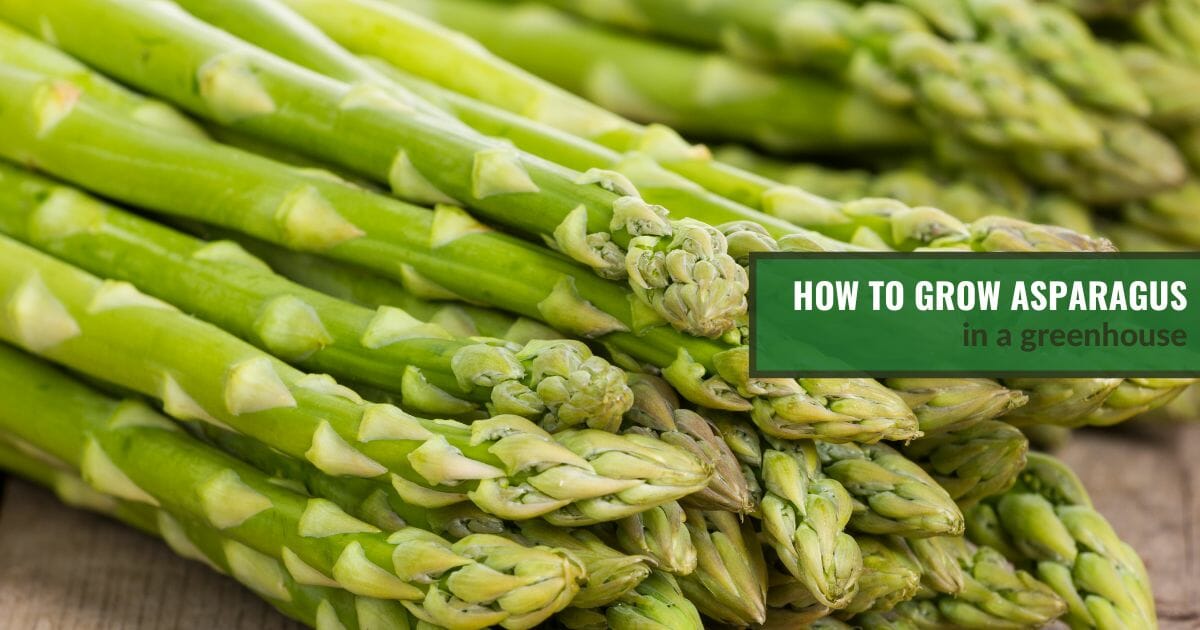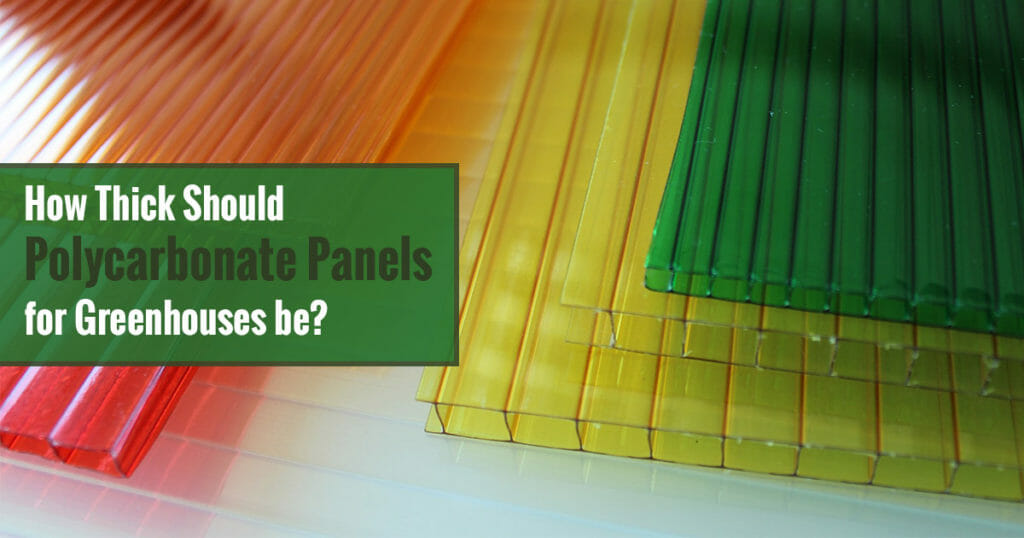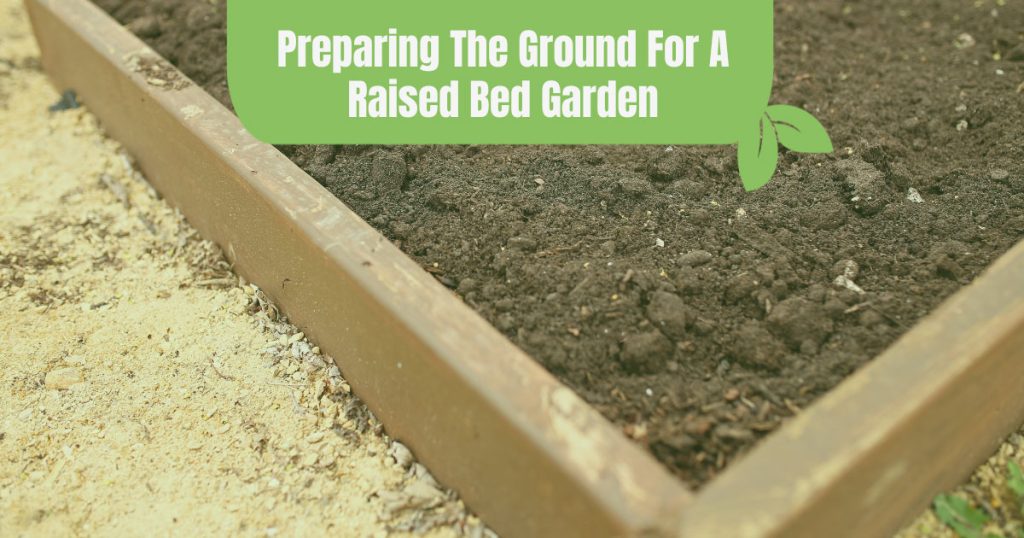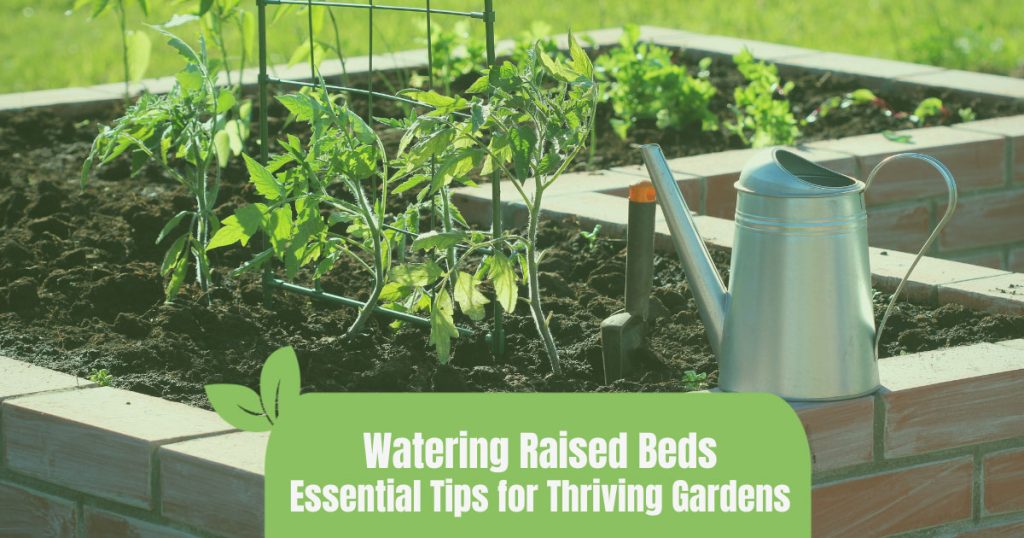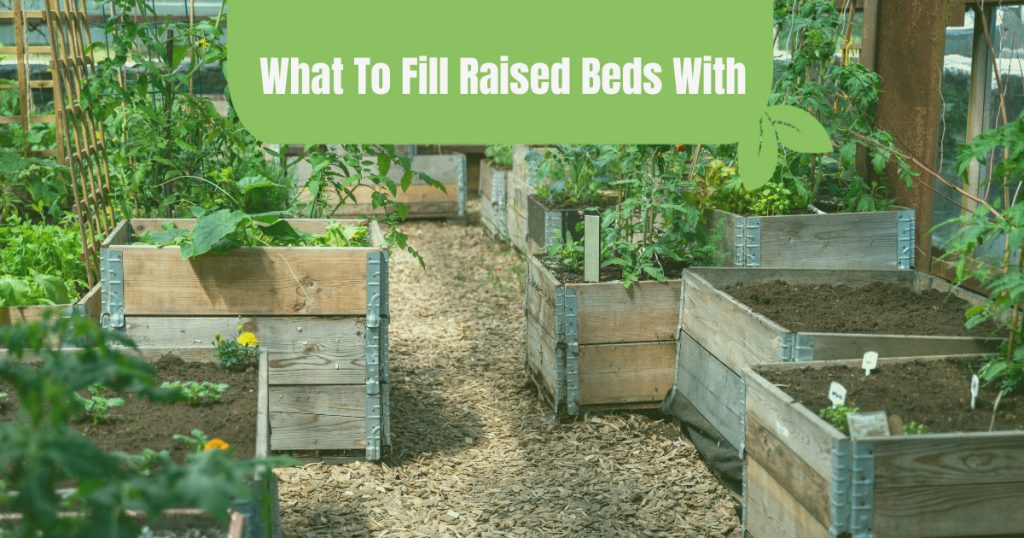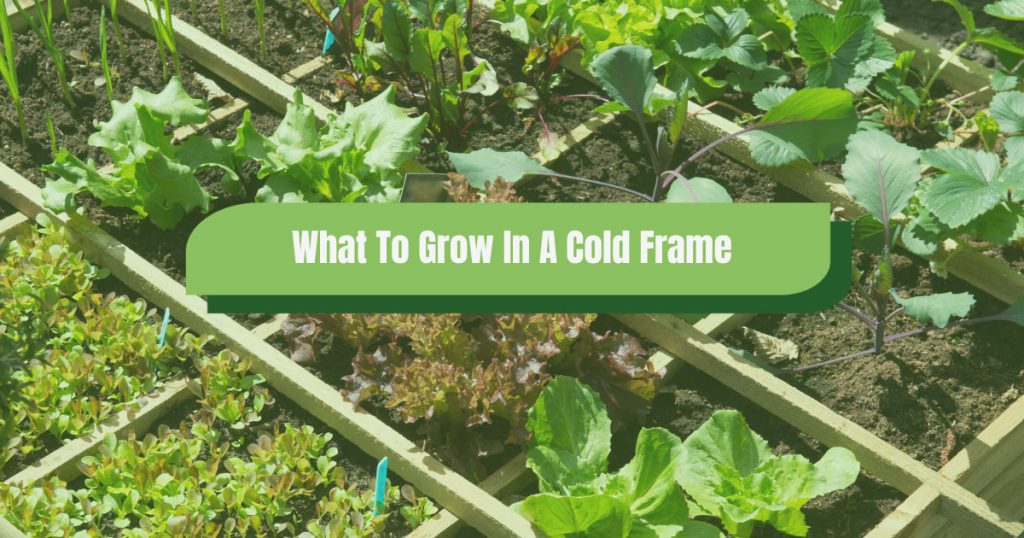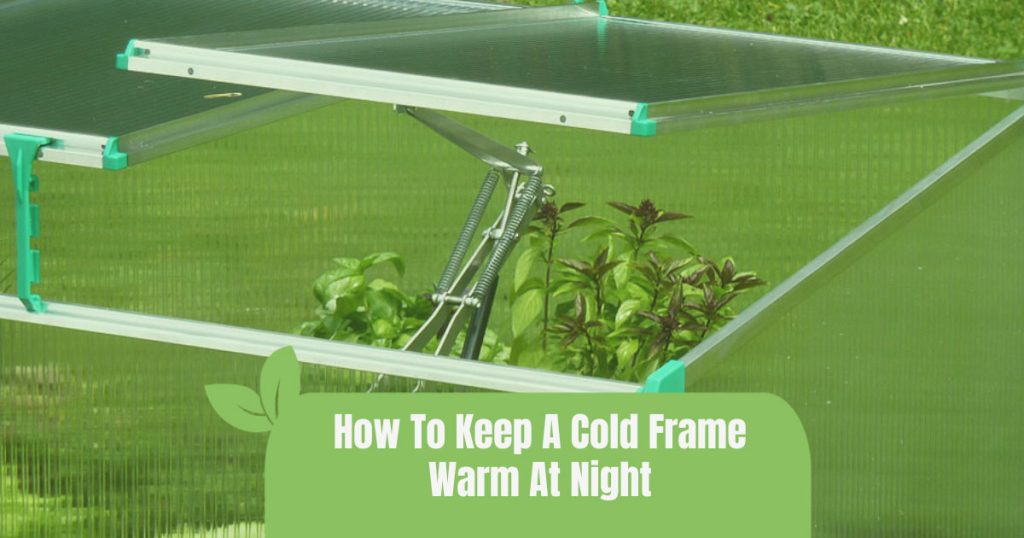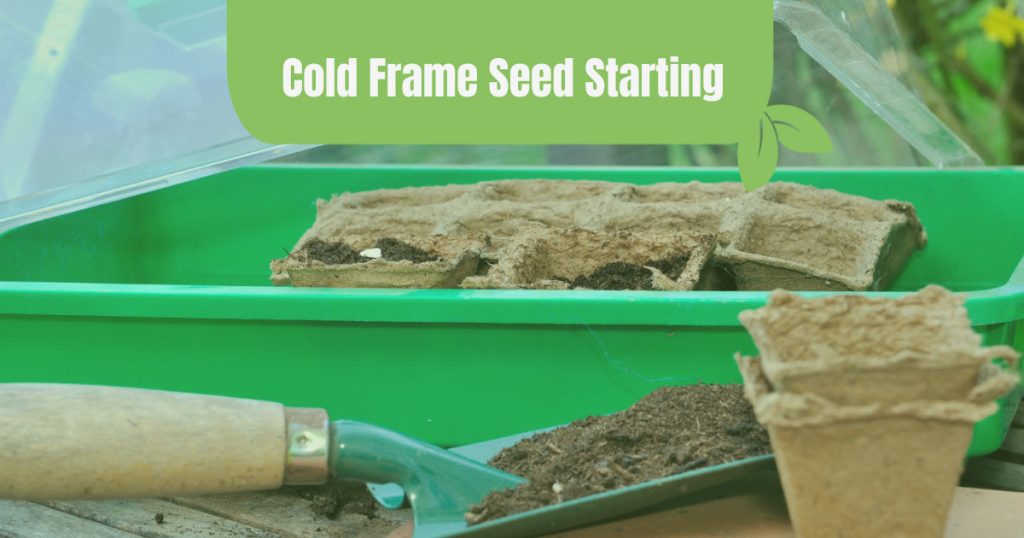









With a little patience and perseverance, you can successfully grow asparagus in your greenhouse. While new asparagus plants take some time to establish, after a few years you’ll be harvesting more asparagus spears than what you know what to do with for years to come!
Asparagus is a perennial that can be grown outdoors in a wide range of USDA zones, but you can absolutely grow it in a greenhouse or cold frame to kickstart the season. Some planning will go a long way towards a healthy greenhouse asparagus crop. Most importantly, you’ll want to provide the asparagus plants with adequate space and allow them to go dormant for a period of time.
Growing your asparagus in a greenhouse or cold frame offers several advantages, such as providing protection from weeds and common asparagus pests. If you provide the right care for your asparagus plants through the first few years, you’ll be rewarded with abundant harvests for years to come!
Can you grow asparagus in a greenhouse?
Asparagus (Asparagus officinalis) is a flowering perennial that has been cultivated as a vegetable for thousands of years, with the first asparagus recipe dating back to the third century. While it takes a few years to grow before it can be harvested, a single plant can continue to provide yields for 15 years or more. In other words, planting asparagus is one of the best investments you can make as a greenhouse gardener.
In most climates, asparagus can easily be grown outdoors. But you can also choose to grow asparagus in a greenhouse or cold frame to kickstart the season and provide protection from pests. Or perhaps that’s the only space you have available – that’s okay too.
To ensure the longevity of your greenhouse-grown asparagus, you’ll first need to understand how it grows.
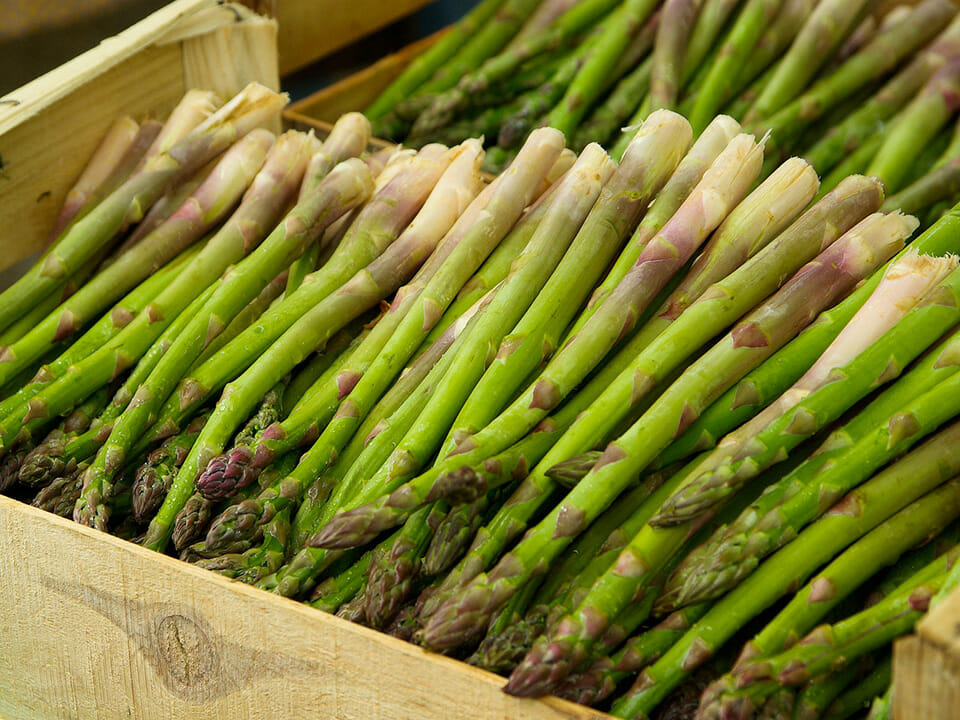
The size of asparagus
Asparagus is a large plant, growing 4-6 feet above the soil and as deep as 10-15 feet underground! When planting asparagus in the greenhouse, it’s important to choose a spot that can accommodate this immense growth.
While you can successfully grow asparagus in containers, you must ensure they’re large enough to accommodate the roots of asparagus plants. You may find more success growing your asparagus directly in the soil or in a raised bed.
Asparagus plants need dormancy
The second challenge for growing asparagus in your greenhouse is making sure that your asparagus plants undergo a dormancy period. Dormancy allows the plants to rest between seasons and build up enough nutrient and energy stores to produce new shoots in the spring.
When grown outdoors in USDA zones 3-8, asparagus will naturally enter a dormancy period during the winter months and reemerge in early spring. Once its harvest season is over, the plants will go to their fern stage, which is essential to promote healthy root development. Plus, this will ensure better harvests in the following years!
If your greenhouse is equipped with grow lights or heaters to keep your greenhouse bright and warm through the winter, you can still grow asparagus. However, you’ll want to plant your asparagus in a spot that will be both cooler and darker during the winter to help facilitate that much needed winter dormancy.
Quick overview of growing asparagus in a greenhouse
- Type: Warm-season crop
- Time from seed to harvest: 1-2 years
- Germination temp: 70-77°F
- Time until first emergence: 10-12 days (needs a year to establish)
- Best temp to grow: 75-85°F
- Height: 60-108 in
- Spread: 12-18 in (plant in rows)
- Grow from seed: 1/4-3/4 in deep; rows 18 in apart
- Companions: Tomatoes, eggplant, basil, parsley, coriander, comfrey, dill
- Keep away from: Leeks, garlic, onion and potatoes
How to plant asparagus in a greenhouse
There are two main ways to plant asparagus in your greenhouse: starting from seed and planting 2-year-old crown cuttings. Which method you choose depends primarily on how long you’re willing to wait before you can harvest your asparagus. Both methods have their unique advantages.
Starting asparagus from crowns
Crown cuttings are the most popular method for starting asparagus as they can fast-track your asparagus plant’s growth, allowing you to start harvesting after just 1 year instead of 3. Typically, growers sell 2-year-old male crowns. While there’s nothing wrong with female asparagus plants, male ones tend to produce more harvestable spears.
There are many ways to plant asparagus crown cuttings, but it helps to start by soaking them in room-temperature water or compost tea for about 30 minutes. This rehydrates the roots and makes them more pliable for planting.
When the crowns are ready to plant, dig a trench in the soil about 6-10 inches deep. Next, add a small hill within that trench and place the crown on the hill. Spread the roots so they fall on either side of that hill, then cover the entire crown with soil.
Space asparagus crowns about 12-18 inches apart, or as recommended by the producer.
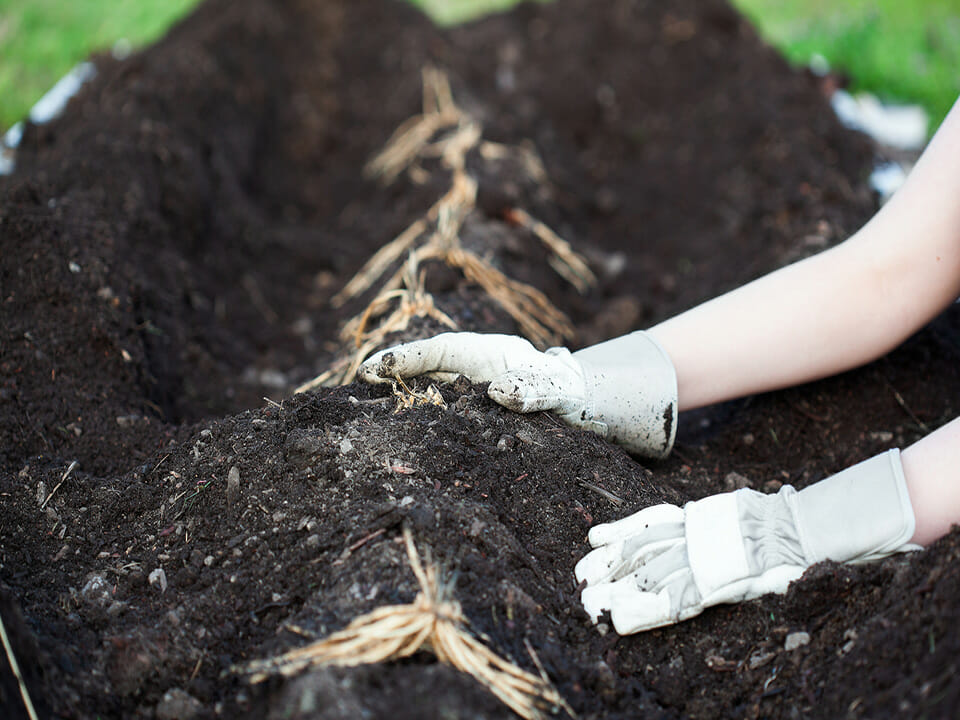
Starting asparagus from seed
Starting asparagus from seed requires more patience, as they need more time to grow before you can start harvesting the spears. Some gardeners insist that this is the preferred method for a stronger crop of plants. Growing asparagus from seed is also a good option if you’re looking to grow a particularly unique variety.
To start asparagus from seed, first soak your seeds in room temperature water for a few hours. You can plant asparagus seeds in seedling flats and then transfer the seedlings when they are 2-3 inches tall.
You can also sow the seeds directly into the soil in your greenhouse, then thin the plants to their final spacing when 6 inches tall.
Planning and greenhouse placement
Because planting asparagus in your greenhouse is a long-term investment, it’s important to plan ahead. While it’s not impossible to relocate asparagus plants later on, it’s better to plant them in their permanent location from the start.
When choosing a spot, know that your asparagus plants will need full sun (approximately 6-8 hours), though they may also tolerate some shade. Additionally, keep in mind that asparagus plants produce tall ferns that might block the light from other plants growing in your greenhouse. Planting them on the edge of a bed or in their own dedicated space is a good way to prevent competition with other plants.
Lastly, consider how much space you’re willing to dedicate to your asparagus crop. Individual asparagus plants need to be spaced about 12-18 inches apart, and rows of asparagus plants should be about 2-3 feet apart.
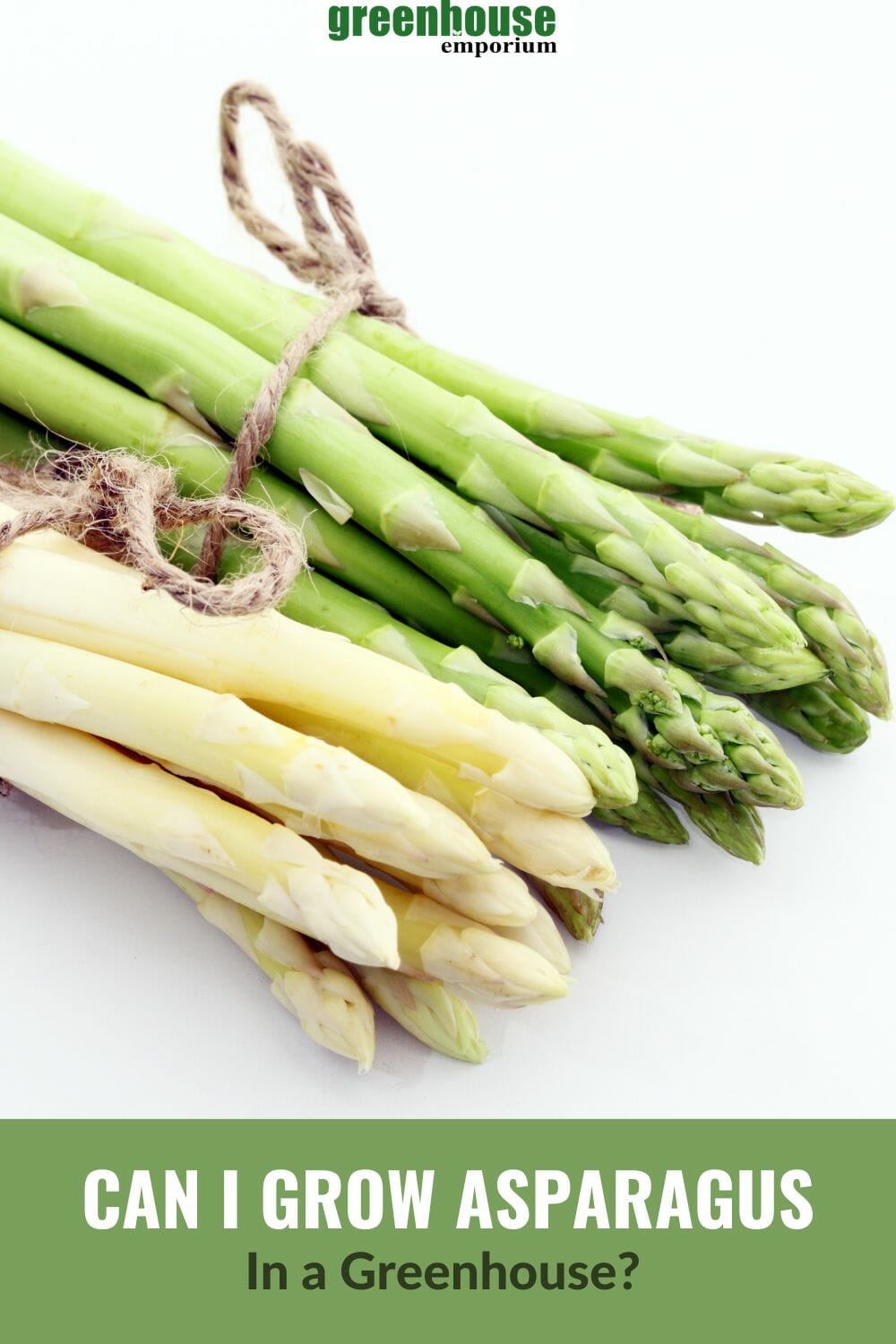
How to care for greenhouse-grown asparagus
Now that you’ve found the perfect location and have planted asparagus in your greenhouse, the fun can begin! In this section, we give you the tips you need to make sure that those newly planted crowns or asparagus seedlings not only survive, but thrive!
Watering
Asparagus plants prefer moist soil but will become more drought-tolerant as they mature. One inch of water per week is often plenty, but your greenhouse conditions and temperature may impact how often you water your asparagus.
Before watering, check the top few inches of soil for moisture. Hold off on watering when the soil still feels moist.
During the summer, asparagus benefits from adding a few inches of mulch to the top of the soil to retain moisture and heat, particularly in the first few years.
Fertilizing
Asparagus plants prefer high potassium and phosphorus fertilizers, typically in the late summer/early fall. However, don’t over-fertilize your asparagus to prevent fertilizer burn. Follow the instructions carefully on your particular fertilizer for best results.
Pruning
At the end of the summer, you’ll notice that your plant will start to turn yellow or brown. This means the plant is getting ready for dormancy and sending its nutrients into the roots.
Don’t prune the ferns until they have completely died back, then simply cut the stalks down to soil level. Otherwise, no additional pruning is necessary unless you are looking to tidy up any unruly foliage. Be careful not to prune too much green foliage though, as it’s essential for healthy development.
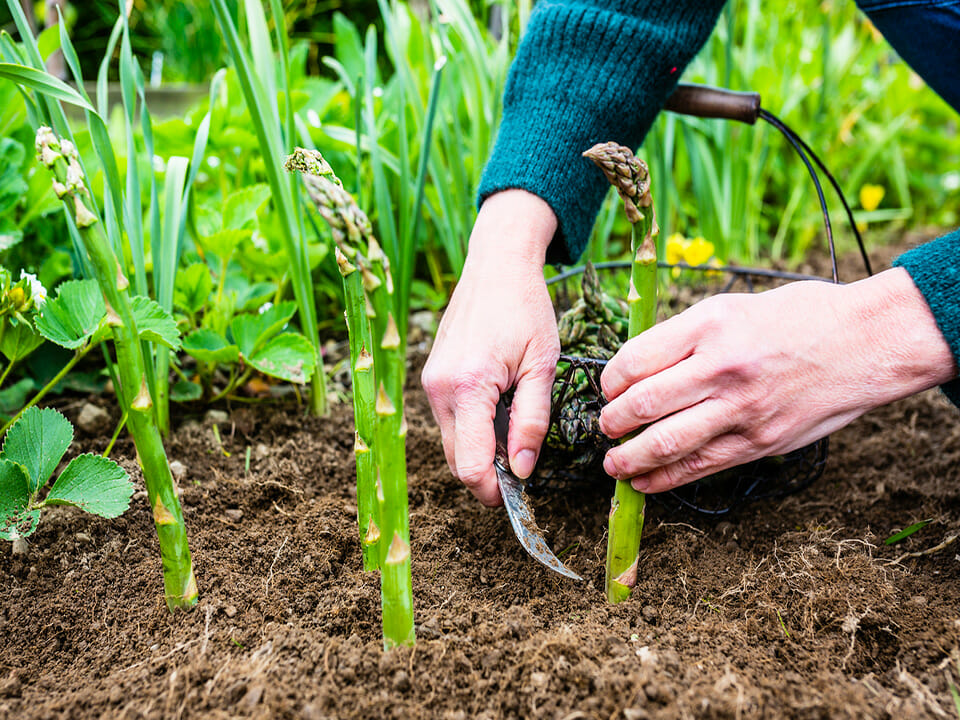
Common issues with growing asparagus in a greenhouse
The biggest struggle that asparagus growers face is combating weeds during those crucial first few years. However, asparagus plants can also suffer from a small handful of pests and diseases. Luckily, these are mostly easy to manage when spotted in time.
Weeds
Even though weeds are less of a problem in the greenhouse, you’ll still have to regularly monitor for them. Weeds not only compete for water, light, and nutrients, but they can hinder the root growth of asparagus.
While weeding can be time-consuming, it’s well worth the effort. In a small bed, simply use your hands to pull out or cut unwanted weeds. In a larger space, use a hand cultivator or hoe to gently cultivate the top inch of soil and remove any weeds.
Adding a layer of weed-seed-free mulch can reduce the amount of weeds that establish themselves alongside your asparagus.
Pests
While asparagus isn’t typically prone to pests, you may find thrips and aphids on your asparagus plants. These small bugs can get inside the greenhouse from other plants or soil.
Luckily, it’s easy to dislodge these pests by shaking the asparagus fern or spraying it with a jet of water. In the case of a severe infestation, treat your plants with a neem oil solution in the evening.
The asparagus beetle is one of the most common pests to threaten a crop of asparagus. Luckily, a greenhouse provides your plants with additional protection from these medium-sized pests. However, if your asparagus spears start bending over oddly, it may be a sign that the asparagus beetle has found your plants.
You can often spot adult asparagus beetles in the afternoon when they’re most active. Beneficial insects, particularly lady beetles, are effective at eliminating larvae and eggs. You can also remove the bugs and eggs by hand and drop them in a bucket of soapy water.
While less common, the asparagus miner is a small fly that can feed on the stalks and spread diseases. Beneficial nematodes or parasitic wasps will help get rid of them, but cutting the plant back during the winter is also a good preventative measure.

Diseases
Asparagus rust is a fungal disease that causes orange spotting on the spears and foliage. Having good air circulation will help prevent it. Stemphylium purple spot, on the other hand, is a fungal disease that causes purple spotting, which can be fixed with an organic fungicide.
Fusarium root rot is the deadliest disease for asparagus. Fusarium is an infection found in soil which cannot be cured and will cause wilting, yellowing, dry rot, and, eventually, plant death. If the soil is infected, avoid planting new asparagus there for five years.
How to harvest asparagus
Asparagus needs at least three growing seasons to build up enough nutrient reserves before it can be harvested. Therefore, it’s best to wait until the plant’s third year, or one year after transplanting asparagus from crowns.
If you’re growing asparagus from seed, during the first year your plants will focus on developing strong, healthy roots, and may send up a few small spears that you should allow to grow into ferns. In the second year, your asparagus will focus on establishing itself as a healthy plant, so hold off on harvesting any spears still.
During the third year, you can harvest lightly for 2-3 weeks. Every year afterwards, you can harvest for 6-8 weeks, allowing your asparagus plants plenty of time to grow ferns so they’ll continue to thrive as a perennial in the long term.
Harvest your asparagus spears when they are 6-8 inches tall. Cut the spears down at soil level to avoid causing damage to new shoots beneath the soil. Harvest before the asparagus starts to open up – after that, the spear becomes woody and unpleasant to taste.
Enjoy your asparagus spears as fresh as possible, either raw, cooked, or grilled! You can store your harvested asparagus for up to several weeks in the refrigerator, but they’ll start losing flavor the longer they’re stored.

